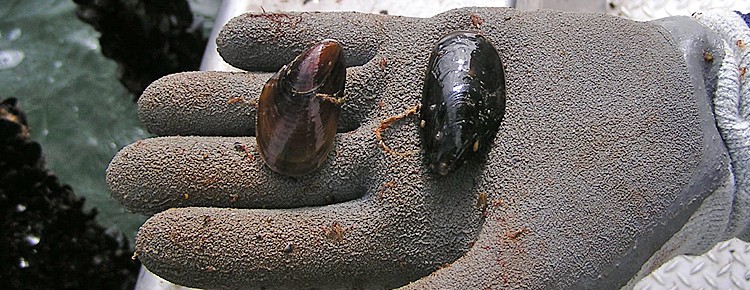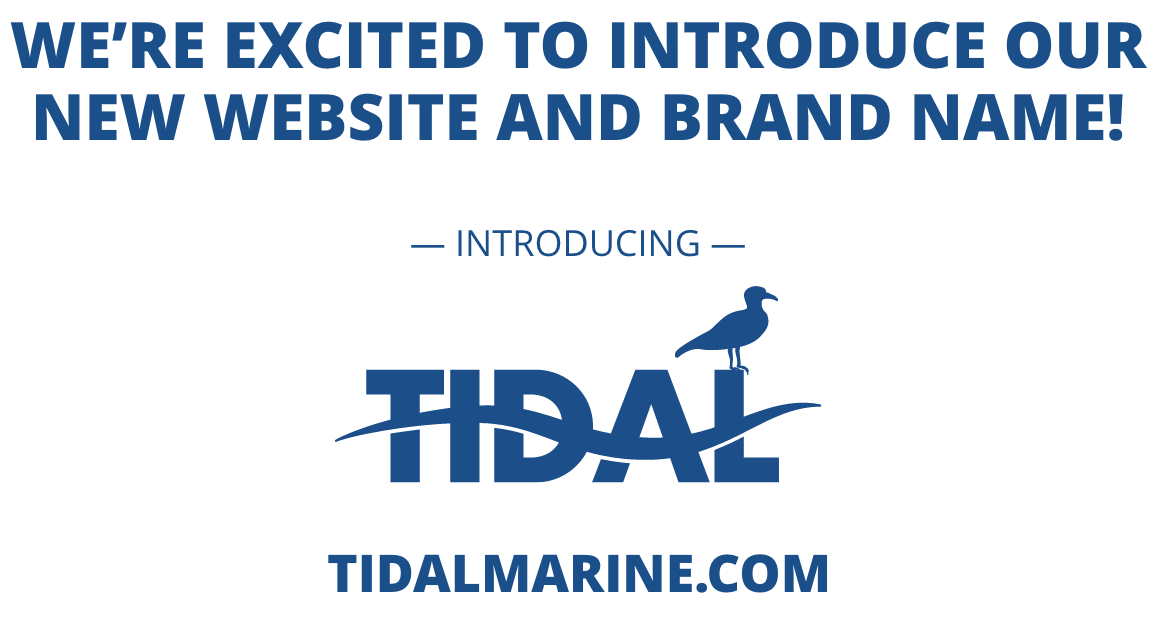
Harvesting Mussels
There are many different methods for harvesting mussels with each dependent on the farmer’s specific rearing practice. In warmer months where ice is not on the water, boats with a hydraulic winch will haul up long lines with single drop or continuous sock attached. This allows farm employees to sever the socks and place them in bins on deck. During winter months, farmers dealing with ice build-up have adapted their collection method and cut strips in the ice to access submerged long lines.
When growing mussels in the Rope (Bouchot) Culture method, collection is done either by hand or hydraulic machinery; wrapping around the pole and pulling the mussels off at once. The Raft Culture method calls for individual drops or trays to be raised one-by-one. The mussels are placed in bins and taken by boat to shore.
Processing Mussels
One of the most important things that have to be done before mussels go to market is to process them adequately. Mussels must first be removed from their growing materials, if any remain. Stripping machines are common in some areas while manual removal is common in others. Some machinery has the capability of service multiple purposes such as a stripper that also serves as a declumper.
In any growing operation, the mussels will have to be removed from each other. Over even a short period of time, the byssal hairs of the mussels will intertwine and cause them to clump. One method for doing this is to use a declumping machine. Declumping machines come in a variety of sizes yet the process remains relatively the same. Mussels enter one end of the tube and declump as they tumble. They are given a spray of water to aid in the process, as they move through.
Byssal hair is an undesirable part of the mussel which the animal uses to attach to a substrate. Near the end of the production cycle, the byssal hair must be removed. Although it is edible, most chefs or wholesalers will not use or resell mussels with this hair still attached. Once the hair is removed, the mussels will move by conveyor to be bagged and shipped. Special care must be taken in order for the mussels to retain their fluid.
We’re here to help. To receive more information on harvesting and processing mussels and the purchase of declumping and byssal hair removal machinery, please give us a call or send us a message using the form to the right.
